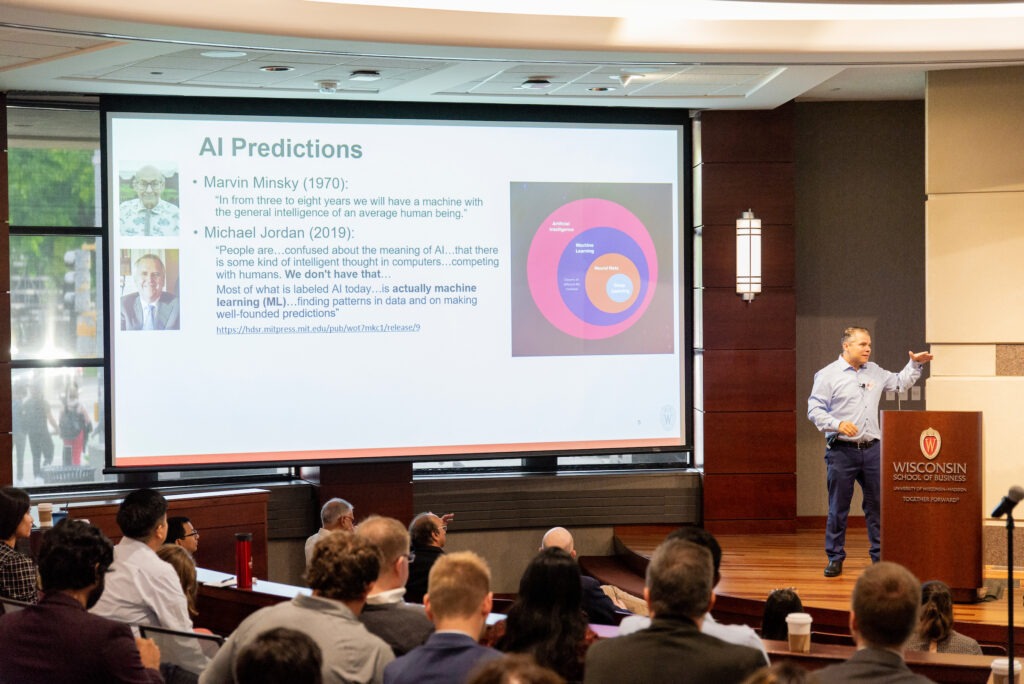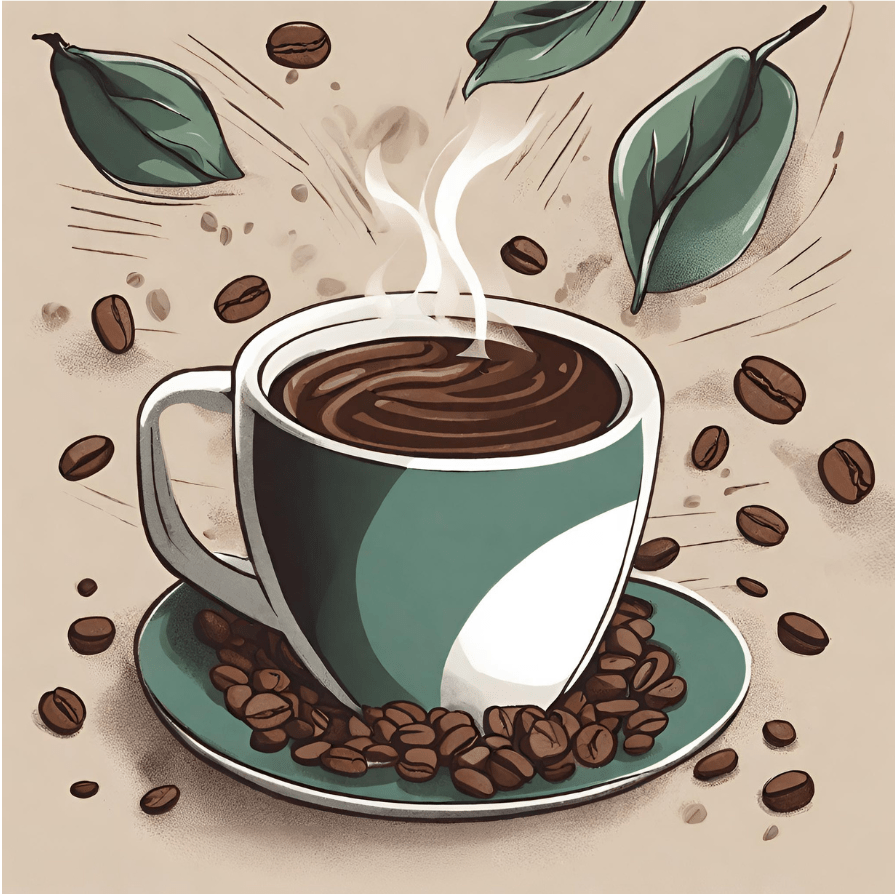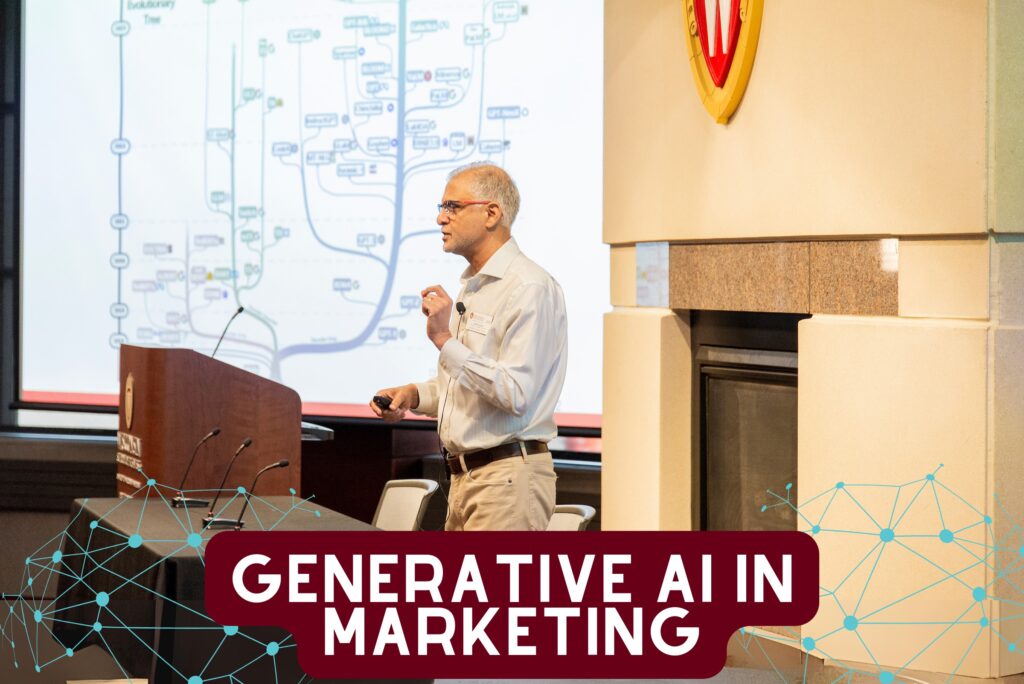This September, the Wisconsin School of Business held an applied learning session about generative AI. AI experts from multiple industries shared their knowledge on the technology, how it has already affected virtually every industry, and what the future of the technology might hold. From the basics of generative AI, to custom AI chip development, to tools that help make search ads more effective, there was a little bit of everything for everyone in the audience. As a marketing student, two themes that jumped out to me as being the most immediately relevant are AI usage in search ads and utilizing AI to boost personal productivity.

Generative AI in Paid Search
Google Ads traditionally combines different headlines with descriptions to create the optimal ad to serve to each potential customer. However, generative AI is enabling the service to take personalization even further. By using the search query context along with the contents of the landing page, Google could use generative AI to create a completely custom ad to serve to each customer. While this idea would boost the productivity of both ad creation and optimization, there are a number of challenges that were highlighted during the learning session. One major obstacle is the tension between automated creativity and control. Because of the massive complexity of modern generative AI models, it is impossible to perfectly control the output. While guardrails can be put in place, there is still a risk that an AI-generated search ad deployed without a human audit could potentially cause harm to company. For example, the ad could potentially promise features about a product that aren’t actually available. On the other side, too much human oversite does not scale efficiently. As the technology progresses, a balance that provides sufficient visibility and control will be necessary.
Another more open-ended challenge was brought up in a discussion I had with one of our MLI faculty members, Alan Stoffer. What does the competition for ad relevance look like in a future of AI-generated search ads? If multiple companies are relying on the same algorithm to both create assets that are the most relevant to a potential customer and also decide which ad is the most relevant one to serve, it becomes unclear what companies can do individually to stand out from each other. While this is a hypothetical scenario for now, it is clear that new marketing skillsets will need to be developed to achieve a competitive advantage in the upcoming era of personalized AI-generated ads.
Generative AI to Boost Personal Productivity
The other general theme that emerged from the learning session is how generative AI can be used to boost personal productivity. One use case that is directly relevant to marketers is generating email campaigns. Writing email ad campaigns from scratch can be time-consuming. But having generative AI draft the emails first can significantly speed up the process. To demonstrate, I gave ChatGPT the prompt “Generate a three-sentence email that I can use in an ad campaign to sell my specialty coffee beans to a small local coffee shop. It should include a call to action for clicking a link to my website to learn more about what makes my coffee different.” It quickly responded with the following:

Subject: Elevate Your Coffee Game with Our Specialty Beans!
Dear [Coffee Shop Owner’s Name],
Our specialty coffee beans are a game-changer. Sourced from the world’s finest regions and roasted to perfection, they offer a flavor profile that will delight your customers. Discover what makes us different by clicking the link below – let’s brew success together!
[Insert Link to Website]
In just seconds, I now have an email that I can either edit if I want different verbiage or just deploy as is. Another powerful feature is I can quickly generate different versions of the campaign for different audiences. After telling ChatGPT to generate a similar email but for a procurement rep at a regional grocery chain, it created the following:
Subject: Elevate Your Shelves with Our Exceptional Coffee Beans!
Dear [Procurement Rep’s Name],
I hope this message finds you well. We’re thrilled to introduce our specialty coffee beans, a standout addition for your grocery store’s shelves. Crafted with care and sourced from premium regions, our beans offer a unique taste experience. Click the link below to explore what sets us apart – let’s brew success together!
[Insert Link to Website]
You can see how AI tailored the messaging for the different audiences. Again, the verbiage can be adjusted if needed, but it is significantly quicker to modify an existing draft than create each email from scratch. The same technique, using generative AI to create drafts as a starting place, can be applied to virtually every aspect of marketing. ChatGPT could be used to generate multiple iterations of a messaging hierarchy to help accelerate a brainstorming session or test during customer interviews. For visual assets, AI image generators like DALL-E could be utilized to create inspiration through exploring different moods and colors.
If you haven’t had a chance to explore the generative AI tools currently available, I highly suggest trying some of them out. There are numerous free tools available and they are a great way to get a feel for what the latest AI tools are capable of. A great starting place is to ask ChatGPT or Google Bard for examples of free AI tools to explore.
